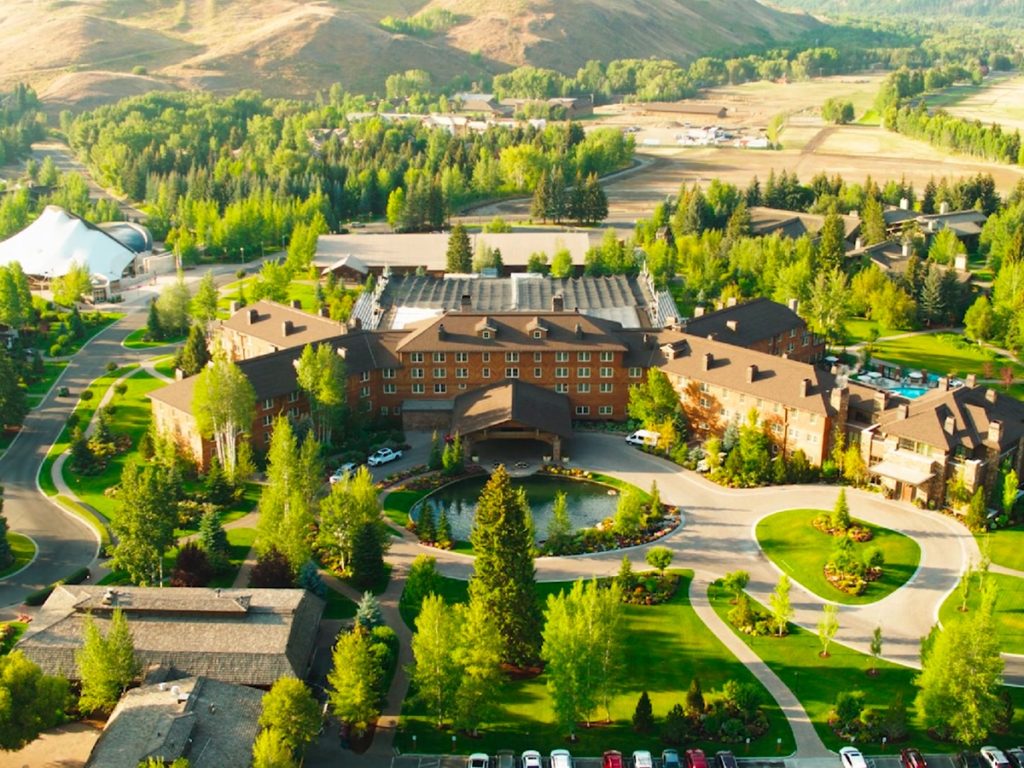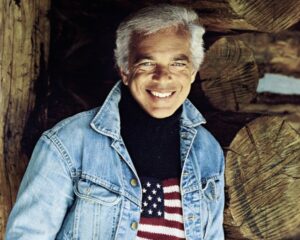Every July, as the alpine meadows of Idaho glow under the gentle sun, a quiet invasion transforms the sleepy resort town of Sun Valley into one of the most powerful gatherings on earth. Officially called the Allen & Co. Sun Valley Conference, this week-long conclave is less a business meeting and more a modern-day Davos for the media, tech, and finance elite — albeit with fewer suits and more puffy vests.
From its inception in 1983, orchestrated by investment banker Herbert Allen Jr., the Sun Valley Conference has drawn an unparalleled mix of the world’s richest and most influential people. This year, the roster is as formidable as ever: Mark Zuckerberg, Tim Cook, Sam Altman, Bob Iger, Shari Redstone, and Jeff Bezos — fresh off his romantic Venetian wedding — are among those expected to make appearances.
Yet, behind the allure of $75 Cobb salads and cashews the size of boomerangs lies something far more consequential: the conference is a stage where billion-dollar deals are whispered into existence, alliances are formed, and the future of entire industries is decided over a casual morning hike or an evening glass of Pinot Noir.
The genesis of an elite gathering
The roots of Sun Valley’s transformation into a power playground stretch back to Herbert Allen Jr.’s vision of creating a relaxed, intimate space where media and technology leaders could mingle away from boardrooms and shareholder meetings. Allen, who led Allen & Co., a boutique investment firm with deep ties in media and entertainment, understood the value of cultivating relationships in an informal setting.
The first gathering in 1983 was a modest affair, but its exclusivity and charm quickly attracted heavy hitters. Over the decades, the conference became the birthplace of some of the most consequential mergers and deals in modern history. Disney’s acquisition of ABC, Comcast’s purchase of NBCUniversal, and Jeff Bezos’s decision to acquire The Washington Post all found momentum at Sun Valley.
The location — Sun Valley Resort, a haven for skiers and outdoor enthusiasts — adds to its mystique. Guests arrive by private jet into Friedman Memorial Airport in nearby Hailey, Idaho, and are whisked to a resort that offers hiking trails, golf courses, and a serenity that belies the seismic business discussions happening within.
The evolving guest list: tech ascendant
While traditional media executives were once the stars of Sun Valley, the rise of Silicon Valley has fundamentally reshaped the guest list. The tech moguls who now command center stage represent companies with influence that dwarfs that of any film studio or cable conglomerate of the 1990s.
This year, Mark Zuckerberg’s Meta is navigating an AI transformation and virtual reality expansion, while Apple under Tim Cook continues its push into health tech and services, staking a claim beyond hardware. Meanwhile, OpenAI’s Sam Altman is at the vanguard of AI development, representing a sector that both terrifies and excites the global business community.
The presence of figures like Bob Iger, who recently returned to Disney, and Shari Redstone, chairwoman of Paramount Global, illustrates the ongoing tension and synergy between old media and new tech. Legacy media empires face existential questions as streaming wars rage on and advertising dollars shift toward digital platforms and creators.
The symbolic shift at Sun Valley mirrors this broader narrative: media barons and publishing magnates are no longer the only power brokers; they now share the stage (often reluctantly) with Silicon Valley’s engineering prodigies and startup unicorn founders.
The big deals and big ideas
What makes Sun Valley so influential is not just the deals brokered there but the ideas that germinate. In recent years, discussions have centered around AI ethics, content moderation, cybersecurity, and the future of work.
In 2025, artificial intelligence and generative models dominate the agenda. Executives are grappling with how to integrate AI into content creation, advertising, and even newsrooms — all while facing regulatory scrutiny and public skepticism. Sam Altman’s presence ensures that the conversation around AI’s capabilities and risks remains front and center.
Streaming consolidation is another hot topic. With Netflix continuing to experiment with live sports and Amazon Prime Video expanding its global footprint, smaller platforms are searching for partners or buyers. The rumored potential merger between Paramount Global and a tech giant could easily be the product of a lakeside conversation this week.
Meanwhile, sustainability and climate tech are expected to feature prominently. As public and investor pressure mounts, these billionaires are increasingly called upon to put their money — and influence — behind solutions to the climate crisis. The Sun Valley setting, nestled among pristine mountains and rivers, is a pointed backdrop for such discussions.
The culture of Sun Valley: casual power
The image of powerful executives in Patagonia fleeces and Allbirds shoes has become almost satirical, yet it reflects a carefully cultivated informality. Deals are not finalized in boardrooms but on mountain bike trails, golf courses, or during leisurely strolls through wildflower fields.
Social events, including nightly dinners, cocktail hours, and intimate fireside chats, serve as incubators for connection. Spouses and children are often invited, giving the event a veneer of a family-friendly summer retreat rather than a high-stakes summit.
However, beneath this laid-back exterior lies a rigid hierarchy. Invitations are limited and tightly controlled; no journalists are allowed to attend official sessions, though reporters often linger outside in hopes of gleaning tidbits or capturing photos of a handshake that might signal a forthcoming acquisition.
The criticism: a closed club
Despite its reputation as a “summer camp for billionaires,” Sun Valley has increasingly come under scrutiny. Critics argue that it embodies a troubling concentration of power and wealth. In an age of growing economic inequality, the image of the richest individuals gathering in private to discuss the future of industries — and by extension, society — is unsettling to many.
Furthermore, the secrecy and exclusivity clash with calls for greater transparency in business leadership. Decisions that affect millions — from media consolidation to privacy standards — are hatched in spaces inaccessible to the public.
Environmental concerns also dog the event. The carbon footprint of flying in dozens of private jets to a remote Idaho resort has drawn criticism, especially as many of these same executives publicly champion sustainability initiatives.
The allure endures
Yet, despite the criticisms, Sun Valley’s mystique only seems to grow. Its enduring appeal lies in the potent mix of exclusivity, informality, and the chance to shape industries and narratives. For executives, it offers rare face-to-face time with peers who understand the unique pressures of running trillion-dollar enterprises or global media empires.
The conference also provides a rare chance to step away from the always-on nature of digital life. Here, amidst pine-scented trails and alpine lakes, decisions are made at a human pace. Ideas are fleshed out over days rather than minutes, and trust is built in shared experiences rather than email threads.
Looking ahead: a stage for the future
As the 2025 edition unfolds, all eyes are on the potential announcements and alliances that might emerge. Will there be a surprise acquisition or a new content partnership? Will a new AI ethics consortium be formed? Will the latest round of streaming mergers solidify into an unstoppable media super-conglomerate?
More than anything, Sun Valley is a mirror reflecting the shifting balance of power across industries. In 2025, tech’s dominance is unmistakable, but so too is the growing anxiety over its societal impact. The blending of old media influence with new tech capabilities suggests a future where lines blur even further.
While the rest of us may only catch glimpses through grainy paparazzi photos or carefully orchestrated press releases, what happens in Sun Valley often reverberates far beyond Idaho’s borders. The jokes about $75 salads and extravagant snack spreads mask a deeper truth: this is a place where the global order of business is quietly rewritten each July.
In many ways, Sun Valley embodies the paradox of modern leadership — private yet influential, casual yet powerful, criticized yet celebrated. It is where tomorrow’s headlines, technologies, and corporate empires are conceived, often between sips of fine wine or during lakeside yoga sessions.
As we watch from afar, the challenge for these leaders will be to balance the enormous privilege and power they wield with a responsibility to a world increasingly demanding transparency, equity, and accountability. Whether they rise to that challenge remains to be seen — but chances are, the first steps toward that future are already being debated under Idaho’s clear blue skies.
No comments yet.








